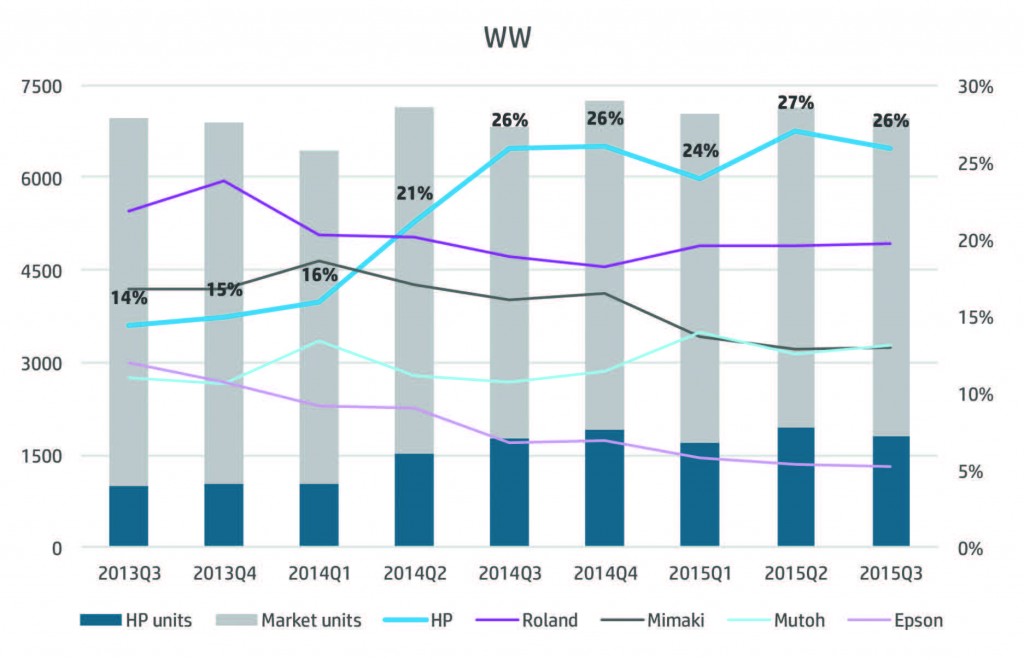This white paper published by HP, explores things to consider when comparing HP Latex vs. Eco-Solvent. It examines questions to consider when deciding on a printer purchase and debunks some of the myths surfacing due to competitors marketing campaigns. The following is a condensed summery of the findings. Click here to read the full report

“Our customers are the ones who have made HP Latex so successful. Their feedback has driven the improvement of this technology with each new generation. With their experiences in mind, I would like to give you my perspective on why HP Latex has proven so popular, and clarify some false statements that our competitors are making.” – Joan Perez Pericot, WW Marketing Director, HP Latex Division
1. Value for Money
- Compare speeds for similar indoor quality (short distance viewing) as well as speeds for similar outdoor quality (long distance viewing). This will help
- HP Latex 310 and 330 printers include a starter ‘RIP in the box’ intended to make it easy for customers with low print volumes to get started
- Consider also warranties (and what they really cover, especially when related to print heads), supplies and other services included. Advantage – HP.
- HP Latex 360 includes an spectrophotometer
- HP Latex Mobile – included with all HP Latex Models
- HP Wallart solution – included with all HP Latex Models
2. Same day delivery
With eco-solvent prints that will be laminated, you must first ‘degas’ it by letting it cure for 24-48 hours. This is because the solvents in the print need to evaporate; otherwise you will get bubbles appearing under the lamination after a few days. What about the fastest eco-solvent printers? You will still need to wait 24-48 hours to finish and deliver it.
HP Latex inks do not have this problem – they are completely dried inside the printer, and prints are ready to finish and ship as soon as they come out of the printer as there are no solvents to evaporate. This is a tremendous business advantage in terms of productivity and surely the main reason why eco-solvent users are converting to HP Latex.
3. Image Quality & Durability
Image quality is a broad term with plenty of technical considerations. The big advantage of HP Latex is how easy it is to get this quality and sustain it print after print across a wide range of applications.

4. Substrates and Applications
When comparing eco-solvent and HP Latex consider the compatible media and the diversity of application coverage. This is one of the most
important benefits of latex compared to solvent, due to the huge range of flexible materials, coated and uncoated. It’s more than vinyl and banners, but expanding to films, papers, textiles, canvas, wall paper, and many more. And now with the 300 series, we also support heat sensitive materials like most popular cheap banners and polypropylenes.
5. Ink and other running costs
In summary, HP Latex 300 printers will cost you on average around 21 cents per square foot to run all things included, very comparable to most ecosolvent printers using original inks. And we also have a bigger supply configuration for customers with high print volumes (the HP Latex 370).



